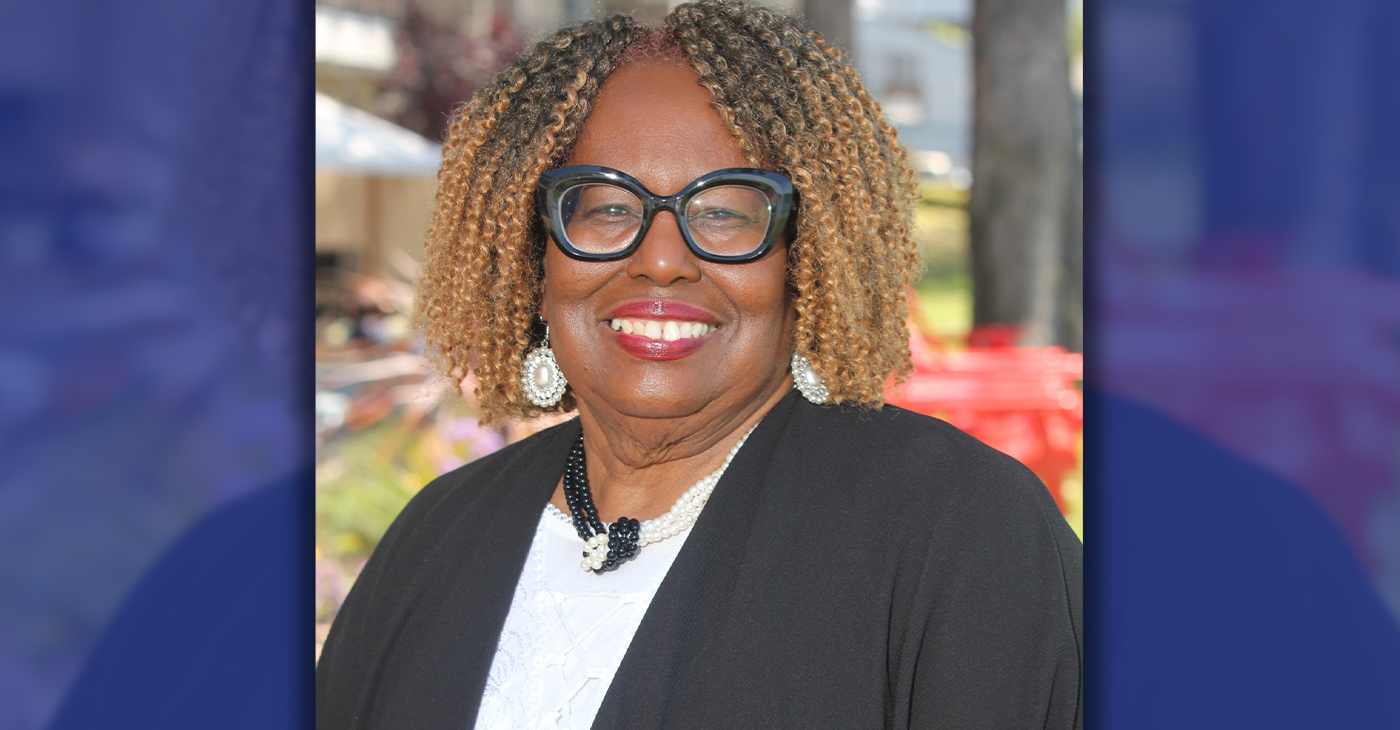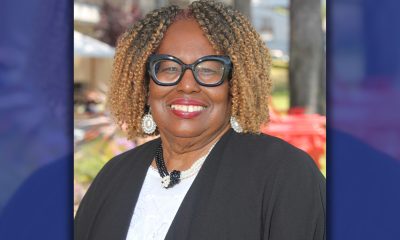Education
Fuel Your School Aids Classroom in East Oakland
Chevron, in partnership with Donorschoose.org, delivered science equipment to Global Family Elementary School in East Oakland this week.
Oakland A’s mascot Stomper shelled out boxes filled with K’NEX solar kits, safety goggles, water PH test kits, and molymod educational models to excited students.
These items fit right in to the very heart of the project-based curriculum at the bilingual school. Educators focus on hands-on learning, maintaining core lessons based on STEM (science, technology, engineering, mathematics).
The K’NEX sets and molymod models help students create scale replicas of molecules, and apply concepts of engineering.
During her speech, veteran educator Eva Beleche explained that these kids need a way to apply math and science to the outside world. With these new educational tools, students will test local creek water and water from the bay, effectively localizing their scientific studies.
The donation to the class also helps out Beleche’s wallet, who said that in the past, she has spent close to $485 on school supplies. Luckily, thanks to programs like this, she hasn’t had to spend that much every year.
“Increasing taxes would help, but we are already overtaxed,” she said. She adds that it helps when “these big corporations take an interest in our kids…because they are the future workers. If we don’t invest in our own kids, where are we going to be in 10 or 15 years?”
The story is similar for other K-5 educators in Oakland. Many have spent close to $485 dollars a year for school supplies, and Donorschoose.org has become an invaluable stop gap measure.
Science teacher Brenda Tuohy, who’s been teaching for 12 years, says that she has easily spent more than that on class supplies, but stopped keeping track because it was disheartening.
Tuohy said, “The kids’ learning experiences are severely limited when they don’t have more access to the equipment necessary to engage in learning in a lot of different modalities.”
On the other hand, Lency Olsen, teacher of 10 years, somewhat disagrees with the postulate that hands-on learning is most effective, but agrees that supplies spur education.
“I do think good teaching can happen with almost nothing, but I do think that it can bring a lesson to life to have supplies and resources, and it can make the learning [process] so much more exciting, fun, and memorable for the kids,” Olsen said.
Members of the community are urged by Chevron and Donorschoose.org to get involved with education and make it possible for kids to succeed in future economies.
Participating Chevron and Texaco stations will donate one dollar (up to $1 million) with every fill-up of at least eight gallons until Oct. 31 to the Fuel Your School program. Since 2010, the program has funded 17,163 projects at 3,196 schools nationwide.
Donorschoose.org accepts target specific donations of as little as one dollar, and is tax-refundable. The charity organization has reached over 12 million students across the U.S.
Activism
Oakland NAACP President Stands on the Frontlines for Equity
With education as a cornerstone, Adams emphasized the importance of youth having access to quality kindergarten through 12th-grade education along with college or vocational programming beyond high school. “I feel that it’s so important for our children to get a good education in K-12th grade, along with the colleges of their choice, especially with the HBCU’s (Historically Black Colleges and Universities).”

By Carla Thomas
For Cynthia Adams, president of the Oakland chapter of the NAACP, fighting for the rights of Black people comes naturally. With southern roots in Arkansas, Adams experienced firsthand the injustice and unfairness of racism.
“Growing up in the Jim Crow South, I experienced the unfair treatment of people of color and how faith can inspire communities to bring about positive and long-lasting change,” said Adams. Adams says a combination of her family and faith has kept her strong in the face of adversity and inspired her life’s work of advocacy.
Adams chose education as a career path — and a means to achieve equity and overcome racism. She earned her bachelor’s degree at the University of Arkansas at Pine Bluff and later received an advanced degree from California State East Bay.
Adams’ experience as an Oakland Unified School District (OUSD) recorder, a counselor, a researcher, and a college recruiter has allowed her to be laser-focused on youth. She also served as the chairperson for the Oakland NAACP youth.
“The mission of the National Association for the Advancement of Colored People is to ensure the political, educational, social, and economic equality of rights of all persons and to eliminate race-based discrimination. We want to ensure our citizens have equal rights and opportunities without discrimination based on race.”
As a partner with the State of California’s Stop the Hate campaign, Adams says the initiative is a step in the right direction. “It’s great that our governor and state created the Stop the Hate campaign and provides resources for victims of racism and other hate crimes,” said Adams. “The racism toward Black people has increased and our children are being targeted,” she continued.
“We, at the Oakland branch, created a declaration on racism that will amplify the needs of our community to combat racism,” continued Adams. “That declaration was adopted nationally.”
Bridging communities and collaborating is also a strategy for moving society toward justice, according to Adams.
“Through the NAACP, we build connections between communities and advocate for the rights of historically marginalized and oppressed individuals,” said Adams. “Collective action is the only way to advance civil rights and promote social equity.”
With education as a cornerstone, Adams emphasized the importance of youth having access to quality kindergarten through 12th-grade education along with college or vocational programming beyond high school. “I feel that it’s so important for our children to get a good education in K-12th grade, along with the colleges of their choice, especially with the HBCU’s (Historically Black Colleges and Universities).”
By taking stands on supporting former Oakland Police Chief LeRonne Armstrong to supporting the recall of a mayor faced with a scandal that brought negative national press to the city of Oakland, Adams has always demanded more for her people, and better for Oakland, the city she calls home.
She expressed pride in the national organization’s announcement of a $200 million fund designed to empower Black funders nationwide. “We all know the health of a community begins with economics,” said Adams.
Adams says that strengthening Black businesses automatically sustains a community. “We’ve also got to educate our community on opportunities and teach our children critical thinking so that they can provide the next generation of solutions for society,” said Adams.
Activism
Expect The Worst? Political Scientists Have a Pessimism Bias, Study Finds
The research, co-authored by UC Berkeley political scientist Andrew T. Little, offers a possible solution: an approach that aggregates experts’ predictions, finds the middle ground, and then reduces the influence of pessimism, leading to the possibility of “remarkably accurate predictions.”

Political experts surveyed recently were prone to pessimism — and were often wrong, says a study co-authored at UC Berkeley. Still, when their predictions were averaged out, they were ‘remarkably accurate’
By Edward Lempinen, UC Berkeley News
The past decade has seen historic challenges for U.S. democracy and an intense focus by scholars on events that seem to signal democratic decline. But new research released two weeks ago finds that a bias toward pessimism among U.S. political scientists often leads to inaccurate predictions about the future threats to democracy.
The research, co-authored by UC Berkeley political scientist Andrew T. Little, offers a possible solution: an approach that aggregates experts’ predictions, finds the middle ground, and then reduces the influence of pessimism, leading to the possibility of “remarkably accurate predictions.”
The study was released by Bright Line Watch, a consortium of political scientists who focus on issues related to the health of U.S. democracy. It offers provocative insight into political scientists’ predictions for the months ahead, including some that would be seen as alarming risks for democracy.
According to an analysis that Little distilled from a Bright Line Watch survey done after the November election, political scientists generally agreed that incoming Republican President Donald Trump is highly likely to pardon MAGA forces imprisoned for roles in the Jan. 6, 2021 uprising that sought to block the peaceful transfer of power from Trump to Democrat Joe Biden.
The research concluded that it’s less likely, but still probable, that Trump will pardon himself from a series of federal criminal convictions and investigations, and that his allies will open an investigation of Biden.
In understanding the future course of U.S. politics, Little said in an interview, it’s important to listen to the consensus of expert political scientists rather than to individual experts who, sometimes, become media figures based on their dire predictions.
“If we’re worried about being excessively pessimistic,” he explained, “and if we don’t want to conclude that every possible bad thing is going to happen, then we should make sure that we’re mainly worrying about things where there is wider consensus (among political scientists).”
Believe the Consensus, Doubt the Outliers
For example, the raw data from hundreds of survey responses studied by Little and Bright Line researchers showed that more than half of the political scientists also expected Trump to form a board that would explore the removal of generals; deport millions of immigrants; and initiate a mass firing of civil service government employees.
But once the researchers aggregated the scholars’ opinions, determined the average of their expectations and controlled for their pessimism bias, the consensus was that the likelihood of those developments falls well below 50%.
Bright Line Watch, founded in 2016, is based at the Chicago Center on Democracy and is collaboratively run by political scientists at the University of Chicago, Dartmouth College, the University of Michigan and the University of Rochester in New York.
The research collaboration between Little and the Bright Line Watch scholars sprang from a collegial disagreement that emerged last January in the pages of the journal Political Science and Politics.
Little and Anne Meng, a political scientist at the University of Virginia, authored a research paper in that issue positing that there is little empirical, data-based evidence of global democratic decline in the past decade.
At the request of the journal editors, scholars at Bright Line Watch submitted a study to counter the argument made by Meng and Little.
But in subsequent weeks, the two teams came together and, in the study released on Dec. 17, found agreement that raw opinion on the state of democracy skews toward pessimism among the political scientists who have participated in the surveys run by Bright Line Watch.
A Stark Measure of Pessimism (and Error)
Surveys conducted during election seasons in 2020, 2022 and 2024 asked political scientists to provide their forecasts on dozens of scenarios that would be, without doubt, harmful for democracy.
The raw data in the new study showed a high level of inaccuracy in the forecasts: While the political scientists, on average, found a 45% likelihood of the negative events happening, fewer than 25% actually came to pass.
Before last month’s election, Bright Line Watch asked the political scientists to assess dozens of possibilities that seemed to be ripped from the headlines. Would foreign hackers cripple voting systems? Would Trump or Vice President Kamala Harris, the Democratic candidate, declare victory before the winner was called by the news media? Would Trump incite political violence again?
Altogether, the political scientists predicted a 44% probability for the list of negative events — but only 10% actually happened.
In the interview, Little defended the focus on possible negative developments by political scientists and others. It’s “very important” to be aware of the potential for harmful developments, he said.
But the focus on worst-case scenarios can also be distracting and destabilizing. The question, then, is why political scientists might develop a bias for pessimism.
To some extent, Little said, it may be a matter of expertise. The data show that scholars who specialize in American politics tend to be the least pessimistic — and the most accurate — forecasters. Political scientists with expertise in international relations, political theory or other areas tend to be more pessimistic and less reliable.
Little offered several other possible explanations. For example, he said, when scholars focus on one narrow area, like threats to democracy, they might see the potential threats with a heightened urgency. Their worry might shape the way they see the wider political world.
“People who study authoritarian politics are probably drawn to that because they think it’s an important problem, and they think it’s a problem that we need to address,” he explained. “If you spend a lot of your time and effort focusing on bad scenarios that might happen, you might end up thinking they’re more likely than they really are.”
And occasionally, he said, scholars may find that raising alarms about imminent dangers to democracy leads to more media invitations.
The Battle for Scholars’ Public Credibility
For the interwoven fields of political science and journalism — and for the wider health of democracy — accuracy is essential. That’s the value of the analytical system described by the authors of the new study. If researchers can find the expert consensus on complex issues and tone down unwarranted alarm, understanding should improve, and democracy should operate more efficiently.
Still, Little cautioned, it would be a mistake to discount or discard the insights offered by expert political scientists.
“You don’t want to say, ‘I’m just going to ignore the experts,’” he advised. “This research shows that that would be a very bad idea. Once you do the adjustments, the experts are very informed, and you can learn a lot from what they say.
Activism
UC Berkeley’s 2024 Winter Commencement: A Day of Reflection, Celebration and Advice
In his remarks, Chancellor Rich Lyons encouraged graduates to consider all that they will carry with them. “You value truth and know it must be protected. You believe in science. You know that conventional wisdom and the status quo can and must always be challenged in order to find a better way,” he said. “I can only hope you share the gratitude I feel for these attributes, values, and aspirations that form the foundation of all that Berkeley is and stands for.”

By Amy Cranch, UC Berkeley News
Prisha Bhadra said her journey to graduate from UC Berkeley began long before she set foot on campus. Her parents, who immigrated from India, “left behind familiarity, security, and every single loved one they had” to give her the chance to choose her own path. For students with immigrant roots, she said, “This moment feels bigger than just us. It’s the product of generations of hope. … This degree doesn’t just belong to me. It belongs to them.”
Bhadra, who majored in political science and minored in South Asian studies, represented more than 1,000 undergraduate and graduate students as the student speaker for the Class of 2024 Winter Commencement in Haas Pavilion on Dec. 21. Nearly 9,000 guests cheered the graduates on as their names were called and they walked across the court — often pausing to dance, take a selfie, or wave to proud onlookers.

Prisha Bhadra, class of 2024, is the daughter of Indian immigrants who left everything behind for her to have the opportunity for her education. Photo by Keegan Houser/UC Berkeley.
Later in the ceremony, Chancellor Rich Lyons presented the Elise and Walter A. Haas International Award to Khadija Bakhtiar, who received a master’s degree in public policy in 2010. The award annually honors a UC Berkeley alum with a distinguished record of service to another country.
Bakhtiar founded Teach For Pakistan, which has recruited 600 talented young Pakistani graduates to teach more than 30,000 students in high-need public schools. She has also catalyzed a national movement to eliminate educational inequity and push for government investment in teacher-leadership models.
Commenting on her journey — which began at Berkeley, where she learned about Teach For America — Bakhtiar said that people didn’t think the program would work in Pakistan “because children from low-income backgrounds can’t make such rapid progress, or because public schools and school systems are too far gone to change,” she said. “It felt like I could see what lies beyond the mountain, but others couldn’t.”

Khadija Bakhtiar, left, received the Elise and Walter A. Haas International Award from UC Berkley Chancellor Rich Lyons. Photo by Keegan Houser/UC Berkeley.
But staying the course has reaped rewards. “I would have missed the moment where students are no longer ‘beneficiaries’ of a teaching program but ask in every school and classroom I visit, … ‘Tell us how we can help the larger movement,’” she said. “I might not have seen the young people who were floundering and overwhelmed in their first months of teaching grow to become school leaders, teacher trainers, entrepreneurs, [or] government advisers supporting learning for hundreds of thousands kids.”
In his remarks, Lyons encouraged graduates to consider all that they will carry with them. “You value truth and know it must be protected. You believe in science. You know that conventional wisdom and the status quo can and must always be challenged in order to find a better way,” he said. “I can only hope you share the gratitude I feel for these attributes, values, and aspirations that form the foundation of all that Berkeley is and stands for.”
Below, a few graduates share their favorite memories, advice for future students, and other tidbits on their Berkeley experience. Their responses have been edited for length and clarity.
Muki Barkan, Oakland, CA, law

Muki Barkan of Oakland, who received his degree in law, will take up criminal defense. Photo by Keegan Houser/UC Berkeley.
Favorite class: A post-conviction and sentencing practicum with Chesa Boudin, the former district attorney of San Francisco. We got to help draft sentencing motions that the Alameda County DA would then file, and a good number of people who’d spent decades in prison got out because of it. That was pretty cool.
Aha moment: I came in wanting to do tenants’ defense and tenants’ rights, and I worked for the East Bay Community Law Center for a summer. That was interesting, but I really found that criminal defense was what I preferred when a friend of mine was unfairly convicted in Marin County for all kinds of reasons. That really struck me.
Extracurricular activities: I had a job outside of campus. I had a community in Oakland, so I did food distribution that I’ve been doing since before I came here, and sometimes we organized care villages. I spend a lot of time hiking in the hills by Berkeley, foraging mushrooms. I’ve got my chanterelle spots up there.
Lester Cedeño, San Bernardino, CA, integrative biology with an emphasis in human anatomy
What you’ll miss most: The faculty. Every single one of the professors I had in integrative biology was so in tune with the courses that they teach and the wellness of their students. I’m going to miss that mentorship.
Jamie Hernandez, San Bernardino, CA, integrative biology
Favorite class: California natural history. A few years ago the teacher took us to the UC natural reserve in Pt. Reyes. He had memorized like a thousand bird calls. During the trip he would stop the car, pull out the binoculars, and make us look at the birds. It was a really good experience.
Monica Gomez, Vallejo, CA, integrative biology with an emphasis in wellness
What you’ll miss most: I appreciated all the libraries that we have here. They’re so big, and there are so many to choose from.
-

 Activism3 weeks ago
Activism3 weeks agoBooks for Ghana
-

 Arts and Culture4 weeks ago
Arts and Culture4 weeks agoPromise Marks Performs Songs of Etta James in One-Woman Show, “A Sunday Kind of Love” at the Black Repertory Theater in Berkeley
-

 Bay Area3 weeks ago
Bay Area3 weeks agoGlydways Breaking Ground on 14-Acre Demonstration Facility at Hilltop Mall
-

 Activism4 weeks ago
Activism4 weeks ago‘Donald Trump Is Not a God:’ Rep. Bennie Thompson Blasts Trump’s Call to Jail Him
-

 Activism3 weeks ago
Activism3 weeks agoLiving His Legacy: The Late Oscar Wright’s “Village” Vows to Inherit Activist’s Commitment to Education
-

 Arts and Culture3 weeks ago
Arts and Culture3 weeks agoIn ‘Affrilachia: Testimonies,’ Puts Blacks in Appalacia on the Map
-

 Alameda County3 weeks ago
Alameda County3 weeks agoAC Transit Holiday Bus Offering Free Rides Since 1963
-

 #NNPA BlackPress4 weeks ago
#NNPA BlackPress4 weeks agoCalifornia, Districts Try to Recruit and Retain Black Teachers; Advocates Say More Should Be Done


















































